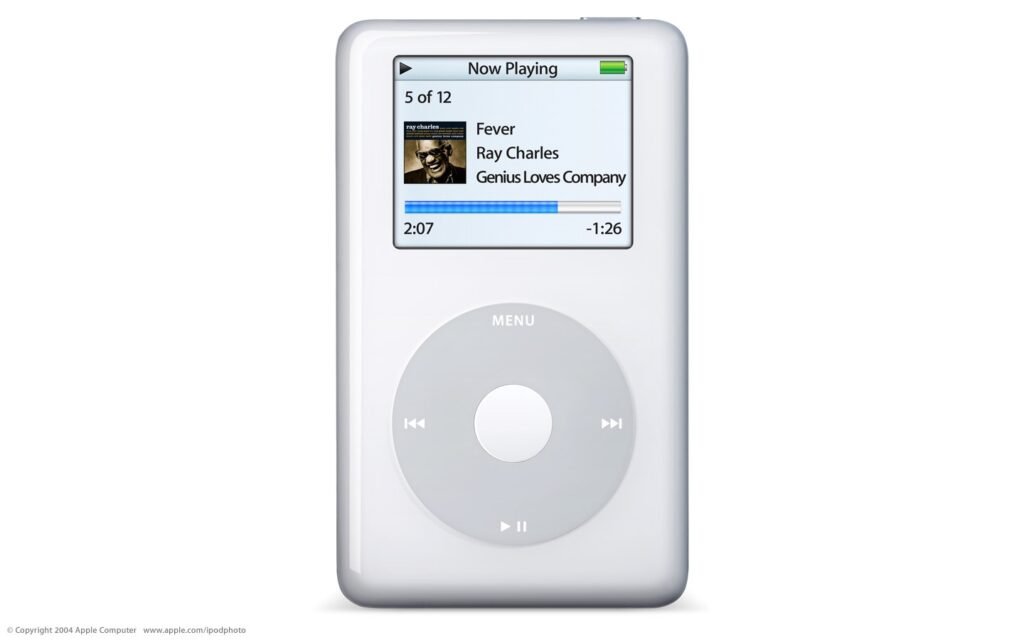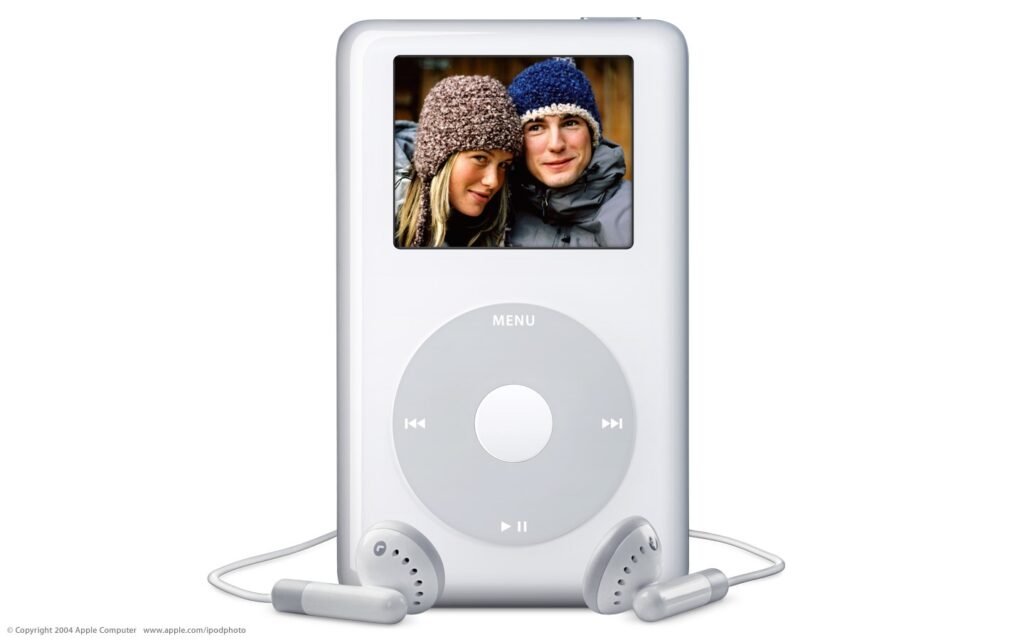
In 2005, Apple made waves in the portable MP3 player industry by unveiling the iconic iPod with Color Display (4th Generation). This groundbreaking device wasn’t just about playing music; it was a complete sensory experience, offering users a visually stunning way to enjoy their favorite tunes and photos on the go.
Before the iPod with Color Display, portable music players were limited in functionality and aesthetics. Apple’s innovation changed that by introducing a device that not only stored thousands of songs but also boasted a vibrant color display, allowing users to view album artwork, photos, calendars, and contacts with crystal clarity.
The merging of the iPod and iPod Photo lines marked a significant shift in the industry, streamlining Apple’s product offerings and enhancing the user experience. With storage capacities of 20 GB and 60 GB, users could carry their entire music library and photo collections wherever they went, all within a sleek and stylish device.
The iPod with Color Display featured a 2-inch color LED-backlit LCD screen, providing users with a crisp and vibrant viewing experience. Whether browsing through album artwork or flipping through photo albums, the display brought content to life in ways previously unimaginable on a portable device.

With the introduction of iTunes, managing and syncing music and podcasts became effortless. Users could easily subscribe to their favorite podcasts and have new episodes automatically downloaded to their devices, ensuring they never missed a beat.
Beyond music, the iPod with Color Display was a multimedia powerhouse. Users could import photos from their digital cameras using the optional iPod Camera Connector and create custom slideshows to share with friends and family. The device wasn’t just a music player; it was a portable entertainment center.
Despite its initial success and widespread acclaim, the iPod with Color Display was discontinued in 2005, marking the end of an era. However, its impact on the portable music player market and the broader cultural landscape cannot be overstated.
Even today, 18 years later, the iPod with Color Display holds a special place in the hearts of music enthusiasts and tech aficionados alike. Its sleek design, intuitive interface, and groundbreaking features paved the way for future innovations in portable entertainment.
The iPod with Color Display may have been discontinued, but its legacy lives on in the countless devices and technologies it inspired. From its revolutionary design to its seamless integration with iTunes, it set the standard for what a portable music player could be.

iPod with Color Display Details
| Introduced | June 28, 2005 – 18 years ago |
| Discontinued | October 12, 2005 – 18 years ago |
| Time on the Market | 106 days (3 months) |
| Model Number | A1099 |
| EMC | 2022 |
| Order Number | MA079LL/A (20 GB) M9830LL/A (60 GB) |
| Original Price | $299 (20 GB) $399 (60 GB) |
| Colors | White |
| Weight | 5.9 oz. – 167 Grams (20 GB) 6.4 oz. – 181 Grams (60 GB) |
| Dimensions | 4.1” H x 2.4” W x 0.63” – 0.75″ D 10.41 cm H x 6.09 cm W x 1.6 – 1.9 cm D |
iPod 4th Gen Tech Specs
Processor
| Processor | PortalPlayer PP5002 (Dual ARM 7TDMI) |
| Processor Speed | Up to 80 MHz |
| Architecture | 32-bit |
| Number of Cores | 2 |
| Cache | 8 KB per processor |
Storage
| Storage | 20 GB 60 GB |
Display
| Built-in Display | 2″ 65,536-color LED-backlit LCD Display |
| Resolutions | 220 x 176 pixels |
Media
| Audio Formats | AAC MP3 MP3 (VBR) Audible WAV AIFF Apple Lossless |
| Photo Formats | JPEG BMP GIF TIFF PNG PSD (Mac only) |
| Video Formats | None |
Connections
| Ports | 1 – 30-pin Dock Connector 1 – 3.5-mm stereo headphone jack |
| Camera | None |
Controls
| Controls | Play/Pause Next title Previous title Menu Hold Click wheel |
Software
| Maximum OS | 1.2.1 |
| iTunes | iTunes 4.7 or later |
| System Requirements | Mac OS X 10.2.8 or later USB 2.0 requires Mac OS X 10.3.4 Windows 2000 with Service Pack 4 Windows XP Home or Professional with Service Pack 2 |
Accessories
| Accessories | Earbud headphones iPod USB Power Adapter Dock Connector to USB 2.0 cable |
Power
| Battery | Built-in rechargeable Lithium-Ion |
| Battery Capacity | Unknown |
| Battery Life | Up to 15 hours of music Up to 5 hours of slideshows with music |
| Charge Time | Up to 5 hours 3 hours to 80% capacity |
| Power | Charging via FireWire, USB 2, or power adapter |
Further Reading and References
- iPod with color display: Technical Specifications – Apple Support
- Apple Merges iPod & iPod photo Lines – Apple Newsroom
- Identify your iPod model – Apple Support
- iPod Classic – Wikipedia
- iPod with Color Display – Low End Mac
- Review: 20GB iPod (with color display) – MacWorld
Disclaimer: The data presented in this article is under continuous development and has been manually collected from various sources based on their availability. The author of this article may revise this dataset as additional research is conducted and reviewed. Please note that the information is provided “as is” and “as available” without express or implied warranties. The author cannot be held responsible for any omissions, inaccuracies, or errors in the published information. Any warranties relating to this information are hereby disclaimed.
